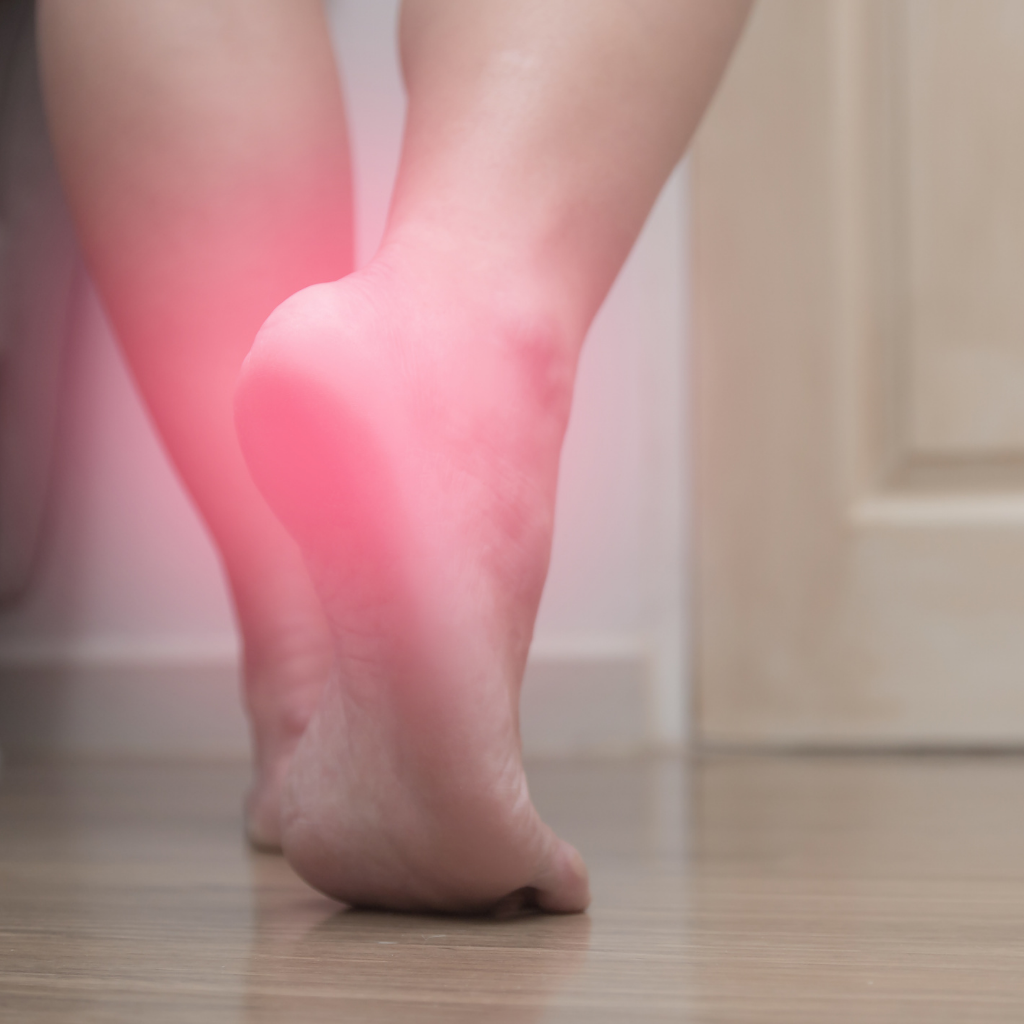
If you’ve ever had an interest in running, chances are you’ve heard of or even experienced Plantar Fasciitis… that burning heel pain resulting from inflammation of the ligaments which run under the foot.
Plantar Fasciitis versus Heel Fat Pad Syndrome
Plantar Fasciitis is the most common cause of heel pain. The second most common cause of heel pain is Heel Fat Pad Syndrome (HFPS). HFPS is the result of degradation of elasticity and/or thickness of the heel pad itself.
Prevalence of these conditions can be due to the amount of running and jumping you do, particularly with the surge in popularity of HIIT workouts over the past decade. We also see the usual suspects of heel pain at play leading including age, weight and even lack of exercise.
In Plantar Fasciitis the pain comes on for no apparent reason. Pain is felt deep in the heel, is generally worse in the morning and can often ease with some gentle stretching and exercise. Pain can be aggravated by prolonged standing on hard surfaces.
In comparison, pain associated with Fat Pad Syndrome can often develop from a fall which has transferred force through the heel, or from heavy heel striking when walking or running. It is common in military services where long distance marching is involved.
Leanne and Fitness Tips Say:
So how do you treat and manage heel pain?
Firstly, you should be examined by a podiatrist, physiotherapist or sports doctor as soon as the pain starts. This will determine the extent of the injury and make a diagnosis. They can then start appropriate management and get the patient back to full function.
Treatment may include massage of the Plantar Fasciitis, dry needling, post exercise icing, and stretching of the fascia itself. Lots of heel symptoms can also be related to poor lower limb biomechanics and so there may be a need for corrective orthotics, foot taping techniques to reduce the load on the fascia as well as high quality, prescribed footwear.
Treatment of the Fat Pad Syndrome includes reducing the impact on the heel as well as good footwear and possibly the use of a rubber heel cup that fits into the heel of the shoe.
At the first sign of heel pain, go and visit your health professional to get on top of things quickly.
xx Leanne
Ensuring you have the right runners for your foot will make a huge impact on the occurrence of heel pain. The best shoe for you will depend on many things such as foot type, pronation, gait, mileage, preferred surfaces, your size as well as any other health conditions you have. Find out how to select the right footwear on the Fitness Tips Health Hub here.


